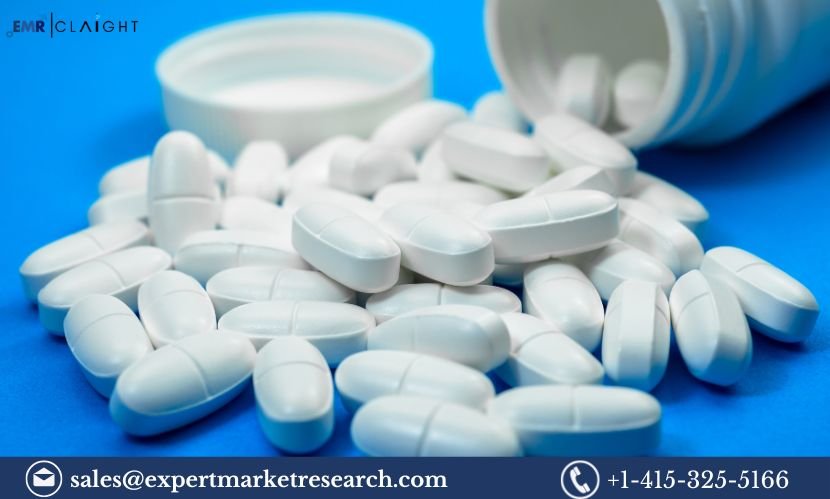Introduction
The Budesonide or Formoterol (Symbicort) Manufacturing Plant Project Report offers a detailed exploration of the process and requirements involved in establishing a plant for the production of Symbicort, a combination medication used to manage asthma and chronic obstructive pulmonary disease (COPD). Symbicort contains Budesonide, a corticosteroid, and Formoterol, a long-acting beta agonist. This combination helps to reduce inflammation and relax the muscles in the airways, improving breathing in patients suffering from respiratory conditions.
The global demand for respiratory medications is increasing due to the rising prevalence of asthma, COPD, and other respiratory disorders. Setting up a manufacturing plant for Symbicort requires a detailed understanding of the pharmaceutical manufacturing process, regulatory requirements, quality control, and market demand.
Industry Overview
The pharmaceutical industry is one of the fastest-growing sectors globally, driven by increasing healthcare awareness and advancements in medical treatments. Respiratory disorders like asthma and COPD are highly prevalent, leading to the growing demand for medications like Symbicort. The combination of Budesonide and Formoterol has proven effective in treating patients with chronic respiratory conditions, making Symbicort one of the most sought-after treatments in the respiratory care market.
The global respiratory drugs market is expected to continue growing due to:
- The increasing incidence of asthma and COPD.
- Aging populations in many countries, which are more prone to respiratory diseases.
- Advances in medical treatments and therapies for asthma and COPD management.
- Growing awareness and access to healthcare services globally.
Due to these factors, the production of Symbicort is seen as a promising opportunity for pharmaceutical companies. However, establishing a manufacturing plant for this medication requires compliance with strict regulatory standards, quality assurance processes, and advanced manufacturing technologies.
Get a Free Sample Report with Table of Contents@
Raw Materials and Ingredients
To manufacture Symbicort (Budesonide/Formoterol), the plant requires a variety of raw materials, including active pharmaceutical ingredients (APIs), excipients, and packaging materials. The key components involved are:
- Budesonide (API): A potent corticosteroid used for its anti-inflammatory properties. It helps to reduce swelling in the airways and prevent asthma attacks and exacerbations in COPD patients.
- Formoterol (API): A long-acting beta-agonist that works by relaxing the muscles in the airways, making it easier to breathe.
- Excipients: These are inactive substances used as carriers for the active ingredients. Excipients help in the formulation, stability, and delivery of the medication. Common excipients include:
- Lactose monohydrate
- Microcrystalline cellulose
- Magnesium stearate
- Sodium chloride
- Hydroxypropyl methylcellulose
- Inhalation Devices: Symbicort is typically delivered via an inhaler, so the plant will need to source inhalation devices such as MDIs (Metered Dose Inhalers) or DPIs (Dry Powder Inhalers), depending on the delivery mechanism chosen for the formulation.
These materials must meet the highest pharmaceutical quality standards, ensuring safety and efficacy in the final product.
Manufacturing Process
The manufacturing of Symbicort is a highly regulated process involving several critical stages. The process ensures that the medication meets strict pharmaceutical standards for purity, dosage, and efficacy. The following are the key stages involved in the manufacturing process:
1. Synthesis of Active Pharmaceutical Ingredients (APIs)
The first step in the manufacturing process involves the synthesis of the active pharmaceutical ingredients Budesonide and Formoterol. This step requires high precision and adherence to stringent quality control protocols.
- Budesonide Synthesis: Budesonide is synthesized through a chemical process that involves multiple reactions, including esterification and cyclization. The process must be carefully controlled to ensure the purity and quality of the final product.
- Formoterol Synthesis: Formoterol is synthesized using chemical reactions that include amination and acylation. The process must be optimized to achieve a high yield and purity.
Both APIs must undergo rigorous quality checks to ensure that they meet the required pharmacological standards.
2. Formulation and Mixing
After the active pharmaceutical ingredients have been synthesized and purified, they are mixed with excipients to form the final pharmaceutical formulation.
- API Mixing: The Budesonide and Formoterol are precisely measured and blended in appropriate ratios. This process is critical to ensuring that the combination is effective and consistent in its therapeutic action.
- Excipients Addition: Excipients such as lactose monohydrate, microcrystalline cellulose, and magnesium stearate are added to the mixture to stabilize the APIs, aid in the manufacturing process, and ensure that the medication can be easily inhaled.
3. Drying and Granulation
Once the ingredients have been mixed, the formulation may be subjected to drying or granulation processes to ensure consistency and proper flowability for further processing. Granulation involves turning the powder into uniform granules, which helps in precise dosing during inhalation.
- Drying: Excess moisture is removed from the formulation to improve shelf life and prevent degradation of the APIs.
- Granulation: This process ensures that the granules have the right size, shape, and texture for inhalation. It helps the formulation to flow smoothly and be delivered effectively by inhaler devices.
4. Inhaler Assembly and Filling
The next critical step involves filling the final formulation into inhaler devices, which can be either metered dose inhalers (MDIs) or dry powder inhalers (DPIs).
- Filling MDIs: For metered dose inhalers, the formulation is filled into canisters, and a propellant is added to enable the medication to be dispensed in a fine mist.
- Filling DPIs: For dry powder inhalers, the formulation is filled into capsules or blisters, which are then loaded into the inhaler device for patient use.
Once the inhaler devices are filled, they are checked for accuracy and consistency in dosing.
5. Packaging
After the inhaler devices are filled, they are sealed, labeled, and packed for distribution. The packaging process involves:
- Sealing: The inhaler devices are sealed to ensure that the medication remains secure and uncontaminated.
- Labeling: Each inhaler is labeled with essential information, including the name of the medication, dosage instructions, expiry date, batch number, and storage requirements.
- Boxing: The inhalers are packaged into outer boxes that protect them during transportation and storage.
6. Quality Control and Testing
Throughout the entire manufacturing process, quality control is essential. The plant must have an extensive testing and monitoring system to ensure that each batch of Symbicort meets pharmaceutical standards.
- In-process Testing: Samples from different stages of production are tested for quality parameters such as API concentration, purity, and physical characteristics.
- Final Testing: The finished inhaler devices undergo a final round of testing to ensure accurate dosing, correct inhalation characteristics, and overall quality.
Tests include:
- Dose uniformity: Ensuring that each puff contains the correct dose of medication.
- Stability testing: Ensuring that the medication remains effective and safe during its shelf life.
- Microbial testing: Ensuring the product is free of harmful microorganisms.
7. Distribution
Once the Symbicort inhalers pass all quality control tests, they are ready for distribution. The product is shipped to pharmaceutical distributors, healthcare providers, and patients.
Facility Requirements
To establish a manufacturing plant for Symbicort, the following key facility requirements should be considered:
- Cleanrooms: Specialized cleanrooms with controlled environmental conditions (such as temperature, humidity, and particulate levels) are essential to prevent contamination of the pharmaceutical products.
- Sterilization Equipment: Equipment for sterilizing the inhaler devices and ensuring the products are free of contaminants.
- Laboratories: Quality control and testing laboratories must be in place to perform in-process and final testing of the APIs, formulation, and finished products.
- Storage: Secure and climate-controlled storage areas for raw materials, finished products, and packaging materials are crucial for maintaining product quality.
Financial Considerations
The financial investment required to set up a manufacturing plant for Symbicort includes both capital investment and operating costs. Key expenses include:
Initial Investment
- Plant Construction: The cost of building the manufacturing facility, including cleanroom construction and installation of specialized equipment.
- Machinery and Equipment: Investment in production machines such as granulators, filling machines, sealing machines, and packaging equipment.
- Licensing and Regulatory Approvals: Fees for obtaining the necessary regulatory approvals and certifications from health authorities such as the FDA or EMA.
Operating Costs
- Raw Materials: Ongoing costs for purchasing APIs, excipients, and inhaler devices.
- Labor: Salaries for skilled labor, technicians, and quality control personnel.
- Energy: Utility costs, including electricity, water, and other essential resources for production.
- Maintenance and Repairs: Regular maintenance of machinery and facility infrastructure.
Revenue Generation
Revenue will be generated from the sale of Symbicort inhalers to pharmaceutical distributors, healthcare providers, and directly to consumers in regions where it is marketed and approved.
Market Demand and Opportunities
The demand for respiratory medications, including Symbicort, is increasing, particularly in regions with high asthma and COPD prevalence. As more individuals are diagnosed with respiratory diseases, there is an opportunity for companies to enter this market and provide effective treatment solutions. With the ongoing trend of aging populations and rising air pollution in many regions, the need for medications like Symbicort is expected to continue growing.
The manufacturing of Budesonide or Formoterol (Symbicort) offers pharmaceutical companies a profitable opportunity to meet the global demand for high-quality respiratory treatments while expanding their market presence in the growing healthcare sector.
Media Contact
Company Name: Claight Corporatio
Contact Person: Lewis Fernandas, Corporate Sales Specialist — U.S.A.
Email: sales@expertmarketresearch.com
Toll Free Number: +1–415–325–5166 | +44–702–402–5790
Address: 30 North Gould Street, Sheridan, WY 82801, USA
Website: www.expertmarketresearch.com
Aus Site: https://www.expertmarketresearch.com.au



